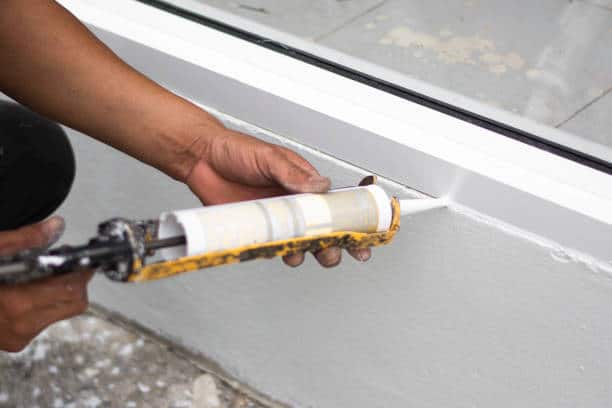Mold loves to grow in any space with high humidity. If you are in an area with humid winters, you know that condensation can be a huge problem, and it often leads to mold growth in the worst possible places, such as on window sills. This mold on your window sill can affect your health—and what you see is just the tip of the iceberg.
Read on as our team at Evergreen Window Cleaning, serving Greater Seattle, WA, explains more about how to remove and prevent mold buildup in the Pacific Northwest.
What Are the Causes of Mold on a Window Sill?
Mold grows on organic material and in humid environments. Some molds have adapted to also grow on grout and other inorganic substances, which is why you’ll often see mold in the shower or bath.
Any source of excess moisture can lead to mold on your window sill. Common sources of moisture include:
- Leaky pipes
- Faulty heating or ventilation system that allows for moisture buildup
- Leaking roof gutters
- Condensation buildup
- Rising damp
- Poor ventilation and airflow that trap moisture in your home
Addressing the underlying causes is the best way to prevent mold on window sills in the future, but you’ll still need to clean off any existing mold growth for best results.
What You’ll Need Before Cleaning Your Window
You don’t need much to remove mold from your window sill, but getting everything ready in advance ensures that the process will be as smooth and hassle-free as possible.
Protective Gear
Some cleaning compounds can be harsh on your skin, so wearing protective gloves is necessary. If you have a big mold infestation, it’s also a good idea to wear a respirator to avoid inhaling mold spores that can cause allergies and other health concerns.
Cleaning Products
The type of cleaning product you need will depend on your window sill’s material. Some cleaning products are great for glass or laminate but can damage wooden window sills.
We look at the most effective cleaning products and window washing solution below, so check them out to see what works best for your window sills.
Note: Not sure if you’re up for the challenge of removing molds in your windows? Call professional exterior cleaning services instead.
How to Clean Mold From Window Sills
Bleach and Ammonia
Bleach and ammonia are great at removing surface mold but can’t penetrate deep enough into the sill’s surface to kill the underlying mycelium, the underlying fungal root structure. You’ll need to clean your window sill every few weeks if you use these compounds.
Water and White Vinegar
Vinegar is a great natural cleaning agent that kills mold due to its high acidity. Apply a 50/50 mix of water and white vinegar to the window sill and let it sit for about an hour to kill off all the mold. Wipe the area clean with a dry cloth.
This mixture is gentle enough to use on both porous and non-porous surfaces. It may not be suitable for wooden surfaces, as vinegar tends to dry surfaces and potentially discolor or warp the wood.
Borax
Borax is a harsh cleaning agent that will remove mold but requires careful use and may not be suitable for delicate surfaces.
Apply the compound to the window sill and leave it to dry. Once dry, wipe with a clean, dry cloth.
Baking Soda
You can use baking soda on its own or in a mixture of vinegar and water for extra killing power. It’s suitable for most window sill surfaces, including wood.
Mix up enough water to form a thick baking soda paste and apply this to the affected area. Leave the paste to dry and then remove it with a clean, dry cloth.
Hydrogen Peroxide
Hydrogen peroxide is excellent at killing visible mold, making it the perfect choice for many situations. It’s also safe for wood and penetrates porous surfaces to kill off any potential spores or mycelium.
Simply apply a 50/50 mix of hydrogen peroxide and water to the window sill and let it sit for an hour or so. Then, wipe it off with a dry cloth.
Hot Water and Soap
A hot water and soap combo is the least effective method of killing off mold and spores. You’ll also need to scrub pretty hard to remove the visible mold while leaving the mycelium untouched. Instead, use one of the other products listed and keep the soap and hot water for simple, routine cleaning.
Tea Tree Oil
Tea tree oil is excellent at killing mold. It can penetrate porous surfaces to kill the roots, making it a great option for wooden sills.
Add around ten drops of oil into a glass of water and swirl it around thoroughly to get an even mixture. Use a spray bottle to apply the mix to the affected area, and leave it for an hour or so. Remove any excess liquid with a dry cloth.
How to Remove Black Molds on Window Sills
Black mold is significantly more dangerous than normal mold due to its toxic spores. You can use the same cleaning products and methods to remove black mold on your window sill, but make sure to wear a respirator to prevent accidental spore inhalation.
Contact Our Expert Window Cleaning Team Today!
Cleaning one or two window sills isn’t a big job, but cleaning your entire home is. Instead of struggling with mold on your window sills, call Evergreen professional window cleaning services at (206) 232-1266 or request a quote today! Located in Shoreline, Washington, we serve the Greater Seattle area. We look forward to getting your home pristine.



